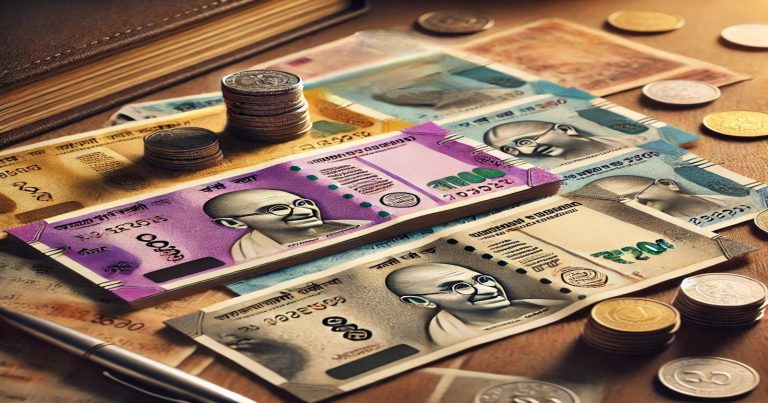Cash means money in the form of coins and banknotes. You spend cash to get goods or services. Individuals and businesses likewise hold cash in banks or wallets. Has cash been a big part of your daily life? It enables you to pay quickly, without any cards or apps. In other words, cash is money that you can touch and spend quickly. Cash still matters today, even when most people pay with cards or phones. Cash is easy, quick and widely accepted. When digital payment goes wrong it helps that too. It will reveal all you ever wanted to know about cash. You will discover what cash is, how people use it, and why businesses still keep it on hand. You will also learn cash flow statements, cash book and how cash second and big cash matters in finance. We will also discuss apps such as cash app, cashe instant personal loans, and the sbi cash back credit card. We will also discuss how big shops like metro cash & carry and metro cash and carry use money. Many small shops in India still accept cash. Students hold fun money for lunch, the bus, and other school items. Cash is the first thing you should learn to manage, if you want to manage your money better.
What is Cash and How We Use It?
Cash has many types. On a daily basis, we utilize it in various methods. People pay cash for food, clothing, books, etc. Shops give change in coins. People also do give cash as gifts at weddings or festivals. Cash is used by businesses to pay employees or purchase products. Even schools charge fees in cash at times.
Types of Cash
Cash is not only notes. It can also be digital. People make choices based on what fits them well. There are different forms of cash. Each one has a role:
- Physical currency: Paper and coins you carry in a purse or keep in a drawer.
- Digital cash: it works like cash, with money in wallets (cash app, paytm, etc.
- Petty cash: population that is small amount used for fill days small costs
- Foreign cash: Money from other countries, such as dollars or euros.
Physical cash is tangible, so people trust it. You can touch it. You don’t require the internet or apps. That’s why it is preferred by small shops and street vendors.
Digital cash is also growing. You store it in your phone. Cash app and other such apps facilitate sending and receiving money. Digital cash is quick and simple, but it requires a phone and internet.
Metro cash & carry, metro cash and carry are examples of big stores that deal with both types of customer. They allowed customers to pay by cash or digitally. This makes shopping smooth.
The Cash Flow Statement: What It Tells You and Why It’s Important
The cash flow statement is a type of report. It tracks flows of money into and out of a business. This holds significant value for the business owners and accountants.
Cash flow is how much cash flows in and out. It helps businesses confirm whether they have sufficient cash or cash equivalents to pay bills, make purchases (i.e. goods, supplies) or invest (i.e. growth). This report shows them whether they are earning money or losing money.
This would be a cash flow statement and is of three parts.
- Operating Activities: This section details cash from sales, services, and core operations.
- Investing Activities: This displays cash spent on purchasing or selling assets, equipment, or stocks.
- Financing Activities: This section covers loans, investor cash, or cash payments to investors
When more money comes in than goes out, cash flow is positive. That is good. If it is more money does out, so it negative. That is a warning sign.
| Activity | Cash In | Cash Out |
| Sales | ₹50,000 | |
| Rent | ₹10,000 | |
| Buying Tools | ₹5,000 | |
| Loan Taken | ₹20,000 | |
| Repayment to Bank | ₹7,000 |
From this, you could see where the cash came in and went out. It prepares you for your next moves. Upon that every business entity either big or small need to check the cash flow statement at intervals. This as a result, assists in planning going cash smart.
Cash Book and How It Works
A cash book is a record. It records every payment or receipt of cash. Money in and out of a business — a cash book This book helps you understand how much cash is available at any point in time. It also reveals who paid and who received money. It serves as a comprehensive record for receipt and payment of cash in the books. Although the cash book and the cash account are different, the entries from the cash book will eventually end up in the general ledger.
Types of Cash Book
Cash book is a special journal used to record all cash and bank transactions. It works both as a journal and a ledger. There are mainly three types of cash books: single column cash book, double column cash book, and triple column cash book, each designed to record different kinds of transactions. There are three types:
- Single column cash book – Only includes cash transactions.
- Double column cash book – Contains both cash and bank transactions.
- Triple column cash book – It displays the cash, bank, and discount.
The entries in a cash book are like this:
| Date | Details | Amount In | Amount Out |
| 1-April | Sold goods | ₹5,000 | |
| 2-April | Paid rent | ₹1,000 | |
| 3-April | Got loan | ₹10,000 |
A student may also maintain a simple cash book. Write how much pocket money you receive and what you spend it on.
Cash book helps in:
- Tracking spending
- Preparing accounts
- Checking savings
It is, therefore, important to learn how to maintain a cash book if you want to direct your money well.
Cash in the Modern Day: Apps, Cards, and Loans
Today, cash is just as often handled with phones or cards or online tools. You can buy without physically having money. Digital payment brands have tried to offer some form of electronic cash payment equivalent. Here’s how you can make cash work for you in modern ways.
Cash App and How It Helps
Cash app is a digital wallet. You can send and get money. It works on your phone. You do not have to go to the bank for it It also provides investing services through a cash app, a registered broker-dealer and FINRA member. With features that range from saving to filing taxes, cash app continues to broaden its spectrum of offerings.
With a cash app, you can:
- Send money to friends
- Pay for online items
- Keep track of your money
- Get alerts for every move
- It is safe, fast, and simple.
SBI Cashback Credit Card
This is an exclusive credit card by SBI. You use it to shop. It returns the portion of money when you pay with it. This is called “cashback.” This credit card is provided to a person according to the eligibility criteria and rules imposed by the state bank of India. One can receive various perks, such as free access to local airport lounges.
Here are some of the benefits of SBI cash back credit card:
- 5% cash return on shopping online
- No joining fee sometimes
- Easy bill payment
- Helps in saving
It should only be used by students once they begin earning. It teaches money handling.
Cashe Instant Personal Loans
CASHe – A digital lending platform for salaried individuals in India. Instead of relying on your credit scores like traditional banks, it assesses your creditworthiness using smart algorithms and your social behavior data. CASHe is known for instant disbursal, hassle-free paperless process and flexible repayment terms. Score instant personal loans from Cashe. Money Here: This app gives loans in minutes You can apply via your phone.
Cashe instant personal loans for:
- School fees
- Books or gadgets
- Emergencies
But keep in mind: loans cost money. You must pay interest. Take loans only when needed. These tools allow for seamless cash use in the digital world.
Big Cash, Cash Second and Business Statements
Some cash terms are also used in business. They assist in planning and handling funds. This could mean large cash movements or cash flow that relates to big cash transactions being handled in bulk and cash second could indicate second cash books or petty cash for everyday expenses. Profit and loss account, balance sheet, cash flow statements, etc. reflect the overall financial performance and position of a business over a period. Together, these elements assist in accurate record-keeping, help aid in decision-making, and ensure proper cash & financial management.
What is Big Cash?
Big Cash: In the context of money, this refers to having a large amount of cash, and in the context of gaming, it is a popular mobile gaming app in India that enables users to play skill-based games such as Rummy, Poker, Carrom, and Fantasy Cricket to win cash rewards that are real. In common parlance, “big cash” refers to a large amount of money, which can be earned, won or acquired quickly. The Big Cash app, known for its instant withdrawals through Paytm or UPI, has been widely used for online competitions where players can earn real money since it is a legal platform for skill-based gaming. Big cash means so much money. In business it is healthy earnings or profits.
For example:
- A company earns ₹1 crore in a month – that’s big money
- A shop sells goods worth ₹10 lakh in Diwali — that is big cash
- Large firms always reconcile for large cash profits.
Cash Second Meaning
Quick Intro to Cash Second Cash Second is an instant personal loan app in India catering to short-term loans for salaried and self-employed individuals. It provides swift disbursal of small loans, generally between ₹5,000 and ₹60,000, with a completely digital process that demands negligible paperwork. The app promises speedy approvals and deposits the loan amount to the user’s bank account in what’s often a matter of minutes to a few hours. Cash Second is more for keeping users out of a financial potential emergency, such as medical bills, bill pay, or a how situation where a purchase is needed, and we deliver it all without the muss and fuss of banks. Cash second is a timing term. It means that in the second phase of a deal, someone hands over cash, or vice versa.
For instance, a seller delivers goods now, but returns cash later, possibly after a day.
How Big Shops Manage Cash & Metro Cash & Carry
There are these big shops called metro cash & carry and metro cash and carry. They sell things in bulk. Small shopkeepers purchase from them to further sell. These stores take in hundreds of dollars in cash a day.” They provide schemes and cashbacks such as sbi cash back credit card. Therefore, even bigger shops operate cash like small shops but in a more organized way.
Cash Use in Metro Cash & Carry
- Accept cash and card both
- Give bills for every buy
- Admit and or have supervision for cash handling
Why Cash Still Matters in India?
Cash is still king in India today. In towns and villages, use it daily by most people. Cash is important in India as a sizeable section of people, particularly those who live in rural and semi-urban locations, do not have good access to digital infrastructure and banking facilities, they will rely largely on cash for transaction that they do in their daily life. Many small vendors, farmers, and laborers are cash-preferring as cash is straightforward, in the moment, and does not need smartphones or internet access. Cash also provides a layer of security and privacy, particularly for older generations. Although UPI and digital wallets have boomed in the past decade, cash is still vital for informal markets, day wage payments and small-scale trade, making it a lifeblood of the Indian economy.
Reasons:
- Not all places have internet
- Many shops still prefer cash
- Cash is simple and trusted
- No extra charges
So students, workers and even business owners maintain cash at the ready.” Helps in travel, shopping, emergencies and what not.
Relevance to ACCA Syllabus
Cash is covered in core ACCA papers such as Financial Accounting (FA), Financial Management (FM) and Strategic Business Reporting (SBR). The ACCA qualification trains students to prepare cash flow statements, manage working capital, and ascertain the financial health of organisations based on cash data.
Cash ACCA Questions
Q1. What is shown in operational activities part of cash flow statement.
A. Interest paid
B. Sale of equipment
C. Share issuance
D. Purchase of land
Answer: A
Q2. A petty cash book is used to:
A. Monitor all fixed asset purchases
B.: Keep a record of small everyday costs
C. Manage investment accounts
D. Reconcile bank statements
Answer: B
Q3. The cash flow statement has a very specific purpose.
A. To measure profitability
B. To measure working capital
C. To show liquidity position
D. To make record of revenues and expenses
Answer: C
Q4. Which of the following is the flow of cash from financing activities?
A. Depreciation expense
B. Sale of fixed assets
C. Issue of debentures
D. Purchase of shares
Answer: C
Q5. What tool do you feel is best from day-to-day for tracking cash?
A. Balance sheet
B. Profit and loss account
C. Cash book
D. Trial balance
Answer: C
Relevance to US CMA Syllabus
Part 2: Strategic Financial Management – CMA students obtain knowledge on cash budgeting, cash flow planning, liquidity, and working capital management. Critical to managing business finances effectively is the ability to understand cash movements.
Cash US CMA Questions
Q1. A cash budget serves the primary purpose of:
A. Estimate future profits
B. Prepare cash inflow and outflow forecasts
C. Track historical expenses
D. Determine depreciation
Answer: B
Q2. What would most improve cash flow?
A. Providing customers with longer credit terms
B. Postponing payables to suppliers within credit limits
C. Increasing inventory level
D. Purchasing fixed assets
Answer: B
Q3. What does the cash conversion cycle measure?
A. Days Inventory Outstanding (DIO)
B. The time difference between when you pay for goods and when you generate cash from the sales.
C. Duration of production
D. Delay from billing to payment
Answer: B
Q4. If a company keeps too much idle cash, it probably suffers from:
A. Improved profitability
B. Poor return on assets
C. Higher market share
D. Improved liquidity and profitability
Answer: B
Q5. Working capital management includes all of the following EXCEPT:
A. How to manage accounts receivable
B. Monitoring inventory
C. Tax rate on capital gain
D. Planning for cash needs
Answer: C
Relevance to US CPA Syllabus
Cash is one of the focus areas in the FAR (Financial Accounting and Reporting) section of CPA exams. Candidates need to be familiar with GAAP requirements, cash disclosures, cash flow classification and proper financial statement preparation.
Cash US CPA Questions
Q1. Under US GAAP, which of the following is excluded as a cash equivalent?
A. Commercial paper
B. 30-day maturities of bank certificates
C. Prepaid rent
D. Treasury bills
Answer: C
Q2. Plant expansion restricted cash needs to be:
A. Cash and cash equivalents deposit in the cash flow statement
B. Current asset
C. Included in the notes to the financial statements
D. Not considered on the balance sheet
Answer: C
Q3. What was the correct classification of cash flows under GAAP?
A. Dividends received Financing activity
B. Interest paid — Investing activity
C. Fixed asset sale – Investing activity
D. Payment of loan – Operating activity
Answer: C
Q4. If the indirect method is used to find cash flow, the first adjustment to net income is:
A. Deducting accounts payable
B. Adding back depreciation
C. Subtracting dividends
D. Adding capital expenditure
Answer: B
Q5. Cash over and short account is maintained for:
A. Track investment gains
B. Correct petty cash mistakes
C. Calculate tax provisions
D. Balance the ledger
Answer: B
Relevance to CFA Syllabus
In Level I and II Financial Reporting & Analysis, CFA students review cash flows, assess liquidity and decipher free cash flow to the firm (FCFF) and free cash flow to equity (FCFE). It’s important for valuation and investment decisions.
Cash CFA Questions
Q1. FCFF is used to:
A. Value equity directly
B. Estimate profitability
C. Assess returns to each of debt and equity holders
D. Understand dividend capacity
Answer: C
Q2. What if cash from operating activities has persistent negative values?
A. Firm has strong growth
B. Company could have liquidity issues
C. Inventory turnover is high
D. Credit sales increase
Answer: B
Q3. Which of these is the best way to assess liquidity?
A. Cash ratio
B. Net profit margin
C. Earnings per share
D. Dividend yield
Answer: A
Q4. Working Capital Characteristic > Expansion in Working Capital:Impacts on FCFF
A. Increasing FCFF
B. Decreasing FCFF
C. Having no impact
D. Improving net income
Answer: B
Q5. What do we include in financing cash flows?
A. Payment of salaries
B. Payment of long-term debt
C. Sale of inventory
D. Purchase of raw materials
Answer: B


